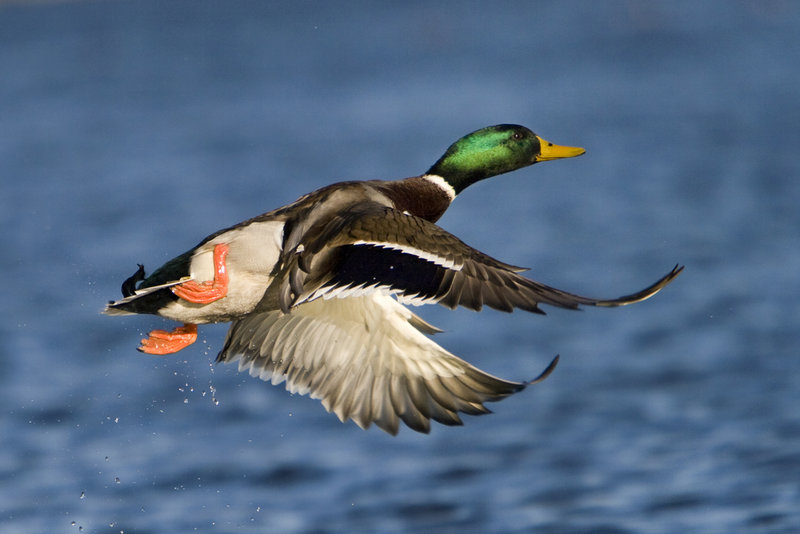Waterfowl season kicks off this week, and based on the results of the recent youth hunting day, it should be a good season.
There are plenty of local birds around and a good cold snap might push more migrants our way. One of the most challenging aspects might be correctly identifying your target. Fortunately, there are a few tips to make the job easier. Bear in mind that these are guidelines, not rules; because for every rule, there’s an exception.
Of the roughly 36 species of ducks that regularly occur in North America, you can narrow the list down a bit, purely by geographic location. For example, Maine waterfowl regulations list mottled ducks and black-bellied and fulvous whistling (tree) ducks. I’d have to check the records, but I’m not sure any of these species has ever been observed in the state of Maine, by anyone.
We can then further narrow the list of possibilities based on habitat. moving to fresh water, for example, we can pare the list down by about two-thirds, then reduce it further depending on the type of wetland you’re hunting.
Shallow freshwater wetlands like marshes, smaller rivers and lake margins are used primarily by puddle ducks, and in Maine, 95 percent of the puddlers you see will be wood ducks, black ducks, mallards or teal.
In my 35 years of waterfowling, I think I’ve witnessed maybe three pintails taken in New England. I’ve seen wigeon but never seen one shot; and never seen a gadwall during the hunting season. And forget about ruddy ducks.
Should you be fortunate enough to shoot a wigeon, pintail, gadwall or shoveler before positively identifying it, you needn’t be too concerned. They are included in the regular daily bag limit of six, not more than four of which can be any one species; and not more than two of which can be pintails. If I ever shot two pintails in one day, I’d probably quit hunting for the day out of pure amazement.
If you move to slightly different habitat, you might see something a little different. In flooded beaver ponds or the margins of bog ponds or larger, deeper water bodies you’ll be more inclined to see divers like ring-necked ducks and hooded mergansers. The former are actually smaller pochards or deep-water divers while the latter are narrow-billed, fish-eaters that, like the wood duck, nest in trees.
Speaking of mergansers, there are two other species you could encounter. Common mergansers, which are anything but common, are most likely to be found on large moving water, i.e. big rivers. Red-breasted mergansers meanwhile, are far more common, and typically found in coastal marine environments.
While you’re on the coast, you might see a few more species. Black ducks and green-winged teal are as common here as in inland marshes and ponds. They’re also joined by the aforementioned red-breasted mergansers, as well as buffleheads and goldeneyes. The latter two — black and white divers — prefer deeper water than the puddlers.
Move a little further out toward the islands and tidal ledges and you’ll encounter sea ducks: scoters, eiders and long-tailed ducks (old squaw). These are deepwater marine feeders and all lumped under the same daily bag limit of seven, though you cannot take more than four of any one species. They look different enough, and generally remain segregated by species, so they’re not too difficult to tell apart.
Large pochards including scaup, redheads and canvasbacks sport a similar black-white-black head to tail pattern (or red-white-black in the case of redheads and canvasbacks.) All are relatively uncommon in Maine, though you may find a few in deeper freshwater environments like inland lakes, or inshore tidal waters along the coast.
Now that we’ve narrowed the list by habitat, we can start to distinguish by behavior. Puddle ducks or dabblers feed by tipping up, never completely submerging themselves. They launch directly off the water to take flight, and drop in to land.
Divers, mergansers and sea ducks submerge completely to feed. Their relatively smaller wings require them to get a “running” start before taking off and they land similarly, coming in at steep angles and skidding across the water’s surface.
The above is a gross overview of the different varieties of waterfowl you’re likely to encounter, enough so you’ll at least be able to narrow the possibilities down to a few. You should still try to identify all ducks to species, which takes practice.
It’s also helpful to bring along a reference. Any decent field guide to birds should suffice. The classic reference is still “Ducks at a Distance,” a federal publication that is out of print but available as part of the hunter safety manual or online at www.npwrc.usgs.gov/resource/birds/duckdist/index.htm
Bob Humphrey is a freelance writer and Registered Maine Guide who lives in Pownal. He can be contacted at:
sportventures@juno.com
Send questions/comments to the editors.



Success. Please wait for the page to reload. If the page does not reload within 5 seconds, please refresh the page.
Enter your email and password to access comments.
Hi, to comment on stories you must . This profile is in addition to your subscription and website login.
Already have a commenting profile? .
Invalid username/password.
Please check your email to confirm and complete your registration.
Only subscribers are eligible to post comments. Please subscribe or login first for digital access. Here’s why.
Use the form below to reset your password. When you've submitted your account email, we will send an email with a reset code.